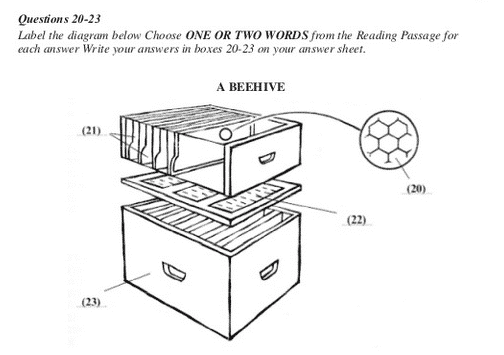How to Make Sense of Scientific Studies About Coronavirus 如何读懂关于冠状病毒的科学文献
Carl Zimmer 卡尔·齐默
A lot of people are reading scientific papers for the first time these days, hoping to make sense of the coronavirus pandemic. If you're one of them, be advised the scientific paper is a peculiar literary genre that can take some getting used to.
When natural philosophers sent their letters to 17th century journals, the editors decided whether they were worth publishing or not. But after 200 years of scientific advances, Victorian scientists could no longer be experts on everything. Journal editors sent papers to outside specialists who understood the details of a particular branch of research better than most scientists.
By the mid-1900s, this practice evolved into what's known as peer review. A journal would publish a paper only after a panel of outside experts decided it was acceptable. Sometimes the reviewers rejected the paper outright; other times they required the fixing of weak points – either by revising the paper or doing additional research.
Papers typically open with some history, giving a justification for the new research they contain. The authors then lay out the methods they used to carry out that research – how they eavesdropped on lions, how they measured chemicals in Martian dust. Then the papers present results, followed by a discussion of what those results mean. Scientists will typically point out the shortcomings in their own research and offer ideas for new studies to see if their interpretations hold water.
As a science writer, I've been reading scientific papers for 30 years. I'd guess that I've read tens of thousands of them, in search of new advances to write about, or to do background research for stories. While I'm not a scientist myself, I've gotten pretty comfortable navigating around them.
One lesson I've learned is that it can take work to piece together the story underlying a paper. If I call scientists and simply ask them to tell me about what they've done, they can offer me a riveting narrative of intellectual exploration. But on the page, we readers have to assemble the story for ourselves.
The coronavirus pandemic now presents an extra challenge: there are far more papers than anyone could ever read. If you use a tool like Google Scholar, you may be able to zero in on some of the papers that are already getting cited by other scientists. They can provide the outlines of the past few months of scientific history – the isolation of the coronavirus, for example, the sequencing of its genome, the discovery that it spreads quickly from person to person even before symptoms emerge. Papers like these will be cited by generations of scientists yet to be born.
Most won't, though. When you read through a scientific paper, it's important to maintain a healthy scepticism. The ongoing flood of papers that have yet to be peer-reviewed – known as preprints – includes a lot of weak research and misleading claims. Some are withdrawn by the authors. Many will never make it into a journal. But some of them are earning sensational headlines before burning out in obscurity.
When you read a scientific paper, try to think about it the way scientists do. Ask some basic questions to judge its merit. Is it based on a few patients or thousands? Is it mixing up correlation and causation? Do the authors actually present the evidence required to come to their conclusions?
Science has always travelled down a bumpy road. Now it is in an extraordinary rush, with the world looking for every new preprint and peer-reviewed paper in the hope that some clue will emerge that helps save millions of lives.
Yet our current plight does not change the nature of the scientific paper. It's never a revelation of absolute truth. At best, it's a status report on our best understanding of nature's mysteries.
最近,很多人生平第一次阅读科学论文,希望弄懂这场冠状病毒大流行病。如果你也是其中一位,那么你需要知道科学论文是一种特殊文体,可能需要适应一下。
当17世纪的自然哲学家向期刊投稿时,期刊编辑决定这些文章是否值得发表。但经过200年的科学进步,维多利亚时期的科学家不可能再是所有领域的专家。期刊编辑会把论文寄给外部专家,这些人对某一研究分支了如指掌,胜过大多数科学家。
到了20世纪中期,这种做法演变为人们熟知的同行评议。只有在外部专家组认定论文可以被接受之后,期刊才会发表此论文。有时评审者会直接拒绝一篇论文;其他时候,他们会要求作者修正论述薄弱之处——要么修改论文,要么追加研究。
论文通常以回顾历史开篇,为文中的新研究提供正当理由。作者随后介绍他们在开展这项研究时使用的方法——他们如何偷听狮子的谈话,如何测量火星尘埃中的化学物质。然后,论文将呈现研究结果,接下来是讨论这些结果有什么意义。科学家通常会指出自身研究的不足并为新研究提供想法,以判断他们的解释能否站得住脚。
作为一名科普作家,我阅读科学论文已有30年了。我猜测,为了寻找可供写作的新进展,或者为写作做背景调查,我已经读过几万篇论文了。尽管我本人不是科学家,但我可以在科学论文中穿梭自如。
我学到的一条经验是,理清一篇论文究竟讲了什么可能要费一番功夫。如果我给科学家打电话,直接请他们告诉我他们都做了什么,那么我可能会听到有关知识探索的迷人叙述。但面对论文时,我们读者不得不自己拼凑出这个故事。
#p#分页标题#e#现在,这场冠状病毒大流行病提出一项额外的挑战:论文多到任何人永远也读不完。如果你使用“谷歌学术搜索”这样的工具,那么你可能会把目光锁定在一些已经被其他科学家引用的论文上。这些论文可能概述了过去几个月的科学进展——例如,科学家分离出这种冠状病毒,对其基因组进行测序,还发现它在病人出现症状前就能快速地人传人。像这样的论文将被尚未出生的一代又一代科学家引用。
但大多数不会。当你通读一篇科学论文时,保持适当的怀疑态度很重要。当前一大批尚未经过同行评议的论文——它们被称作预印本——包含许多说服力不足的研究和误导人的断言。有些论文被作者撤回。很多论文永远不会在期刊上发表。但其中一些论文会制造出耸人听闻的标题,然后再悄无声息地沦为废纸。
当你阅读一篇科学论文时,试着用科学家的方式思考它。问一些基础问题来判断它的价值。它是基于少数患者还是成千上万的患者?它是否把相关性和因果关系混为一谈?作者真的提供了足以得出其结论的证据吗?
科学的道路向来崎岖不平。如今它正在急速奔跑,因为全世界期待着每一篇经过或尚未经过同行评议的新论文,希望为挽救数以百万计的生命找到一丝线索。
然而,我们当前的困境并不能改变科学论文的本质。它从来不是对绝对真理的揭示。它至多是关于我们对自然之谜最佳理解的状态报告。(卿松竹译自美国《纽约时报》网站6月10日文章)
-
相关文章
- 平安保险新型冠状病毒保险怎么免费领取
- 新型冠状病毒直径大小多少纳米
- 专业英语词汇1(中英对照)
- 英文诗歌赏析:吸引我的眼睛(中英对照)
- 联合国2015年终回顾(中英对照)
- 中英对照《飞翔的奇异鸟——新西兰中小学生演讲集》出版
- 央视节目名称中英对照
- 摩根士丹利外汇词语(中英对照)C
- 摩根士丹利外汇词语(中英对照)V
- 个人简历词汇大全:中英对照个人资料
姐的欢喜 » 如何读懂关于冠状病毒的科学文献[中英对照]
免责声明:本文由网友提供互联网分享,经供参考,不代表本网的观点和立场。

 英文信件结尾处署名写在左边还是右边
英文信件结尾处署名写在左边还是右边 小学达到英语专四只能算“标配”?谁在助推
小学达到英语专四只能算“标配”?谁在助推 英语句子的连词(英语三个句子并列用什么连
英语句子的连词(英语三个句子并列用什么连 雅思阅读到底考你什么?
雅思阅读到底考你什么? 雅思阅读不同题型答题技巧
雅思阅读不同题型答题技巧